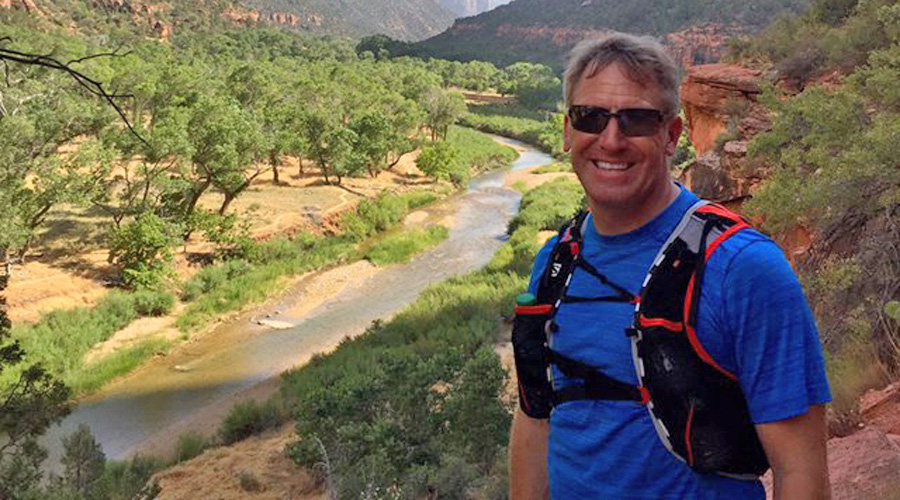Charlie Lunan and David Clucas
Leadership shake-ups resembling a game of musical chairs at some of the outdoor industry’s most iconic brands illustrate the growing pains ownership is facing in finding and retaining its next generation of brand builders.
John Walbrecht, who had left Swedish outdoor brand Fjällräven seven months ago to become president at Columbia Sportswear’s Mountain Hardwear brand, this week switched companies again, leaving Mountain Hardwear to take the president role at Black Diamond. Walbrecht will replace Mark Ritchie, who ascended to the role of president at Black Diamond Equipment less than 11 months ago, after the retirement of founder and CEO Peter Metcalf. That all followed Metcalf’s previously slated successor Zeena Freeman leaving the brand six months into the job, after Black Diamond scaled back its business ambitions.
The common theme for both Mountain Hardwear and Black Diamond has been that of two core authentic outdoor brands under public ownership struggling to ascend to the next level with a clash of financial expectations and sustainable roots. Within the past year, officials at Mountain Hardwear and Black Diamond have stressed a desire to get back to those roots, admittedly with their wings a bit scorched from trying to fly too high, too fast.
When Ritchie took over at Black Diamond, officials announced the brand would scale back its ambitious apparel program, outsource ski manufacturing and refocus on its core business of design, manufacturing and marketing climbing gear. The company was subsequently plagued by costly quality control problems at its resurgent U.S. manufacturing operations in Salt Lake City. Ritchie had worked in operations with Black Diamond for nearly 22 years.
And at Mountain Hardwear, Walbrect was nothing short of blunt when he took control earlier this year, describing the brand’s recent missteps, including losing control of its brand identity.
Family First
Walbrecht will step into his new assignment at Black Diamond, October 3, in a move that will bring him back to Utah, where he attended Brigham Young University (BYU) and has two sons attending college. He told SGB the abrupt change came down to being closer to his family.
Since accepting the job at Mountain Hardwear, Walbrecht has been commuting between the company’s headquarters in the San Francisco Bay area, his home and wife in San Luis Obispo, CA and Columbia’s headquarters in Portland.
“As much as I love the Mountain Hardwear brand and want to see it expand, it was more than I could stand,” he said. “Success is often about making sacrifices today so you can have more tomorrow, but family is not one of those things you can sacrifice today to get more time with tomorrow. The time you have now is it. It was very fortuitous that at a time when I was looking for more balance that [Black Diamond Executive Chairman] Warren Kanders was looking for someone like me to run his team.”
Brand Building
During his tenure at Fjällräven, parent Fenix Outdoor’s North American sales grew from less than $1 million to $44 million, thanks largely to the growing popularity of Fjällräven’s Kånken day pack. North American wholesale revenues were up 18.1 percent in the first half of this year, and the brand recently opened its 17th door in North America, a flagship retail brand center in Boulder, CO.
While Walbrecht has made his mark largely on the soft goods side of the business, he said all brands have the potential to expand into new categories.
“Every brand is a growth brand,” Walbrecht said. ” I don’t think any of us thought Apple would be making phones when they started with the Mac or that we may be driving in an Apple car one day. You just have to figure out what they do really, really well and execute that really well. What Black Diamond Equipment does really well is technical precision equipment. If they make technical precision equipment that happens to come in shape of a jacket, so be it. As long as they stay aligned with the vision retailers see for them, they can succeed.”
Mountain Hardwear Relaunches Search
The leaderhship shake-up surprised many given that Columbia Sportswear Co. (Nasdaq: COLM) spent nine months vetting candidates for the Mountain Hardwear job before naming Walbrecht to the position in March 2016. However, Columbia and Mountain Hardwear executives praised Walbrecht when they announced his departure.
“It was definitely a shorter stay than any of us would have liked,” said Dennis Randall, who was named Mountain Hardwear’s director of marketing six months ago. “He is a tremendous leader and very well respected here, and we are determined to carry his vision forward.”
Columbia Sportswear Co. President Bryan Timm, who will assume a more active role in day-to-day management of Mountain Hardwear until a successor can be named, thanked Walbrecht “for his intensity and leadership.”
In addition to Columbia and Mountain Hardwear, Columbia Sportswear Co. also owns the Sorel, Prana and OutDry brands. “Over the past several months, we have been setting in motion many foundational aspects of our strategy to revitalize the Mountain Hardwear brand and are committed to continuing along that strategic course,” Timm said.
While declining to elaborate on how that course is evolving, Randall said a collaboration with Cole Haan, launched last winter to appeal to more fashion-conscious urban consumers, remains intact. “We are maintaining the same business strategy that is in place currently and Cole Haan is part of that strategy,” he said. “It’s about creating a truly unique proposition true to this brand and us sort of getting back to our roots and the original vision of the brand.”
Randall said Mountain Hardwear’s core leadership team includes Trent Bush, head of design, as well as heads of operations and finance and a half dozen others, including some who have worked for the brand for up to 15 years.
Photo courtesy Black Diamond
















